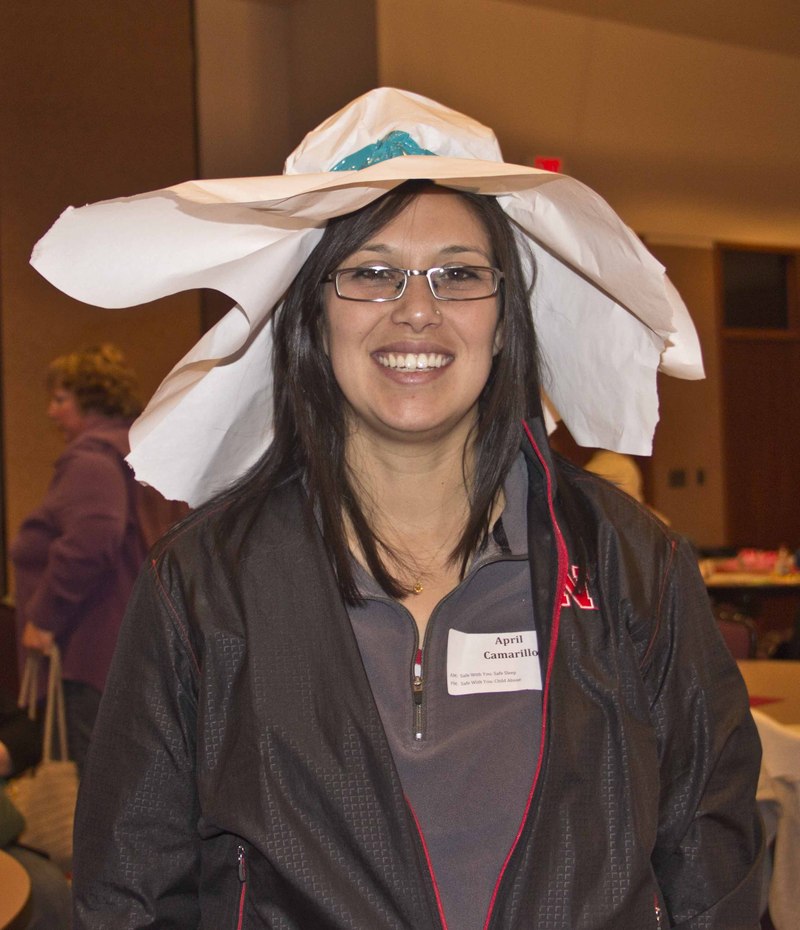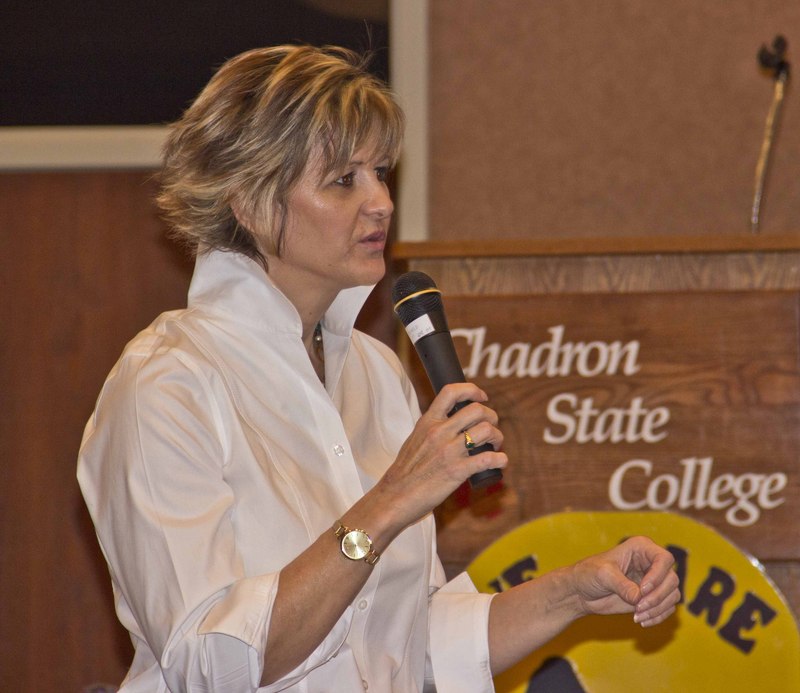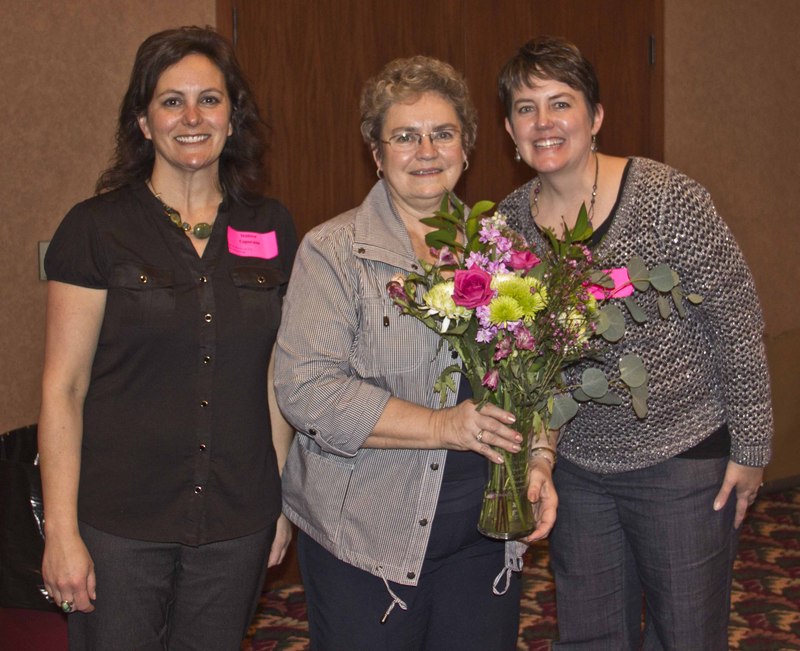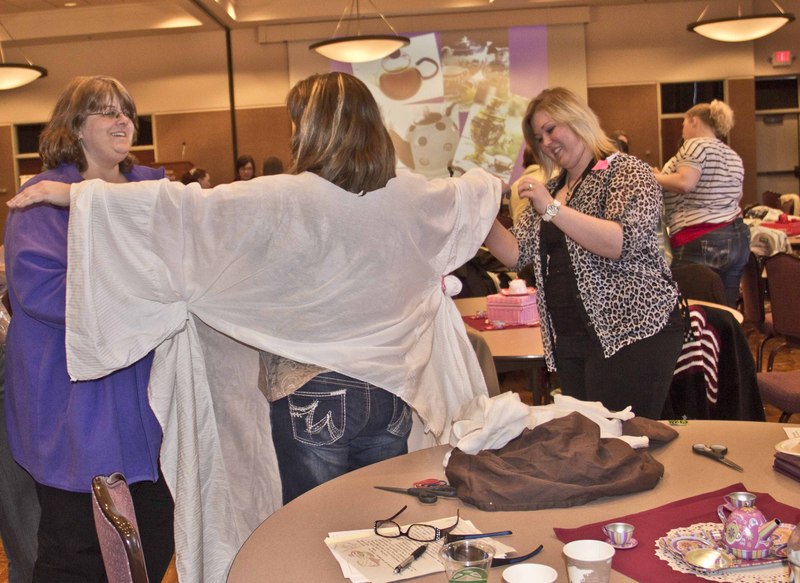President of National Association for Family Child Care speaks at CSC

Hitting the “restart button” to access creativity is of vital importance to early childhood care providers. This advice came from keynote speaker President Patricia Dischler as she addressed 160 attendees at the 25th annual Excellence in Early Childhood conference on the Chadron State College campus Saturday.
For Dischler, this involves jumping up and down on a couch wearing a purple cowboy hat and pink feather boa singing “Zippidy Do Da.” She encouraged participants to find their individual restart button so they can lead children to exploration and discovery.
During the conference, she shared experiences from her 17 years as a family child care provider in Wisconsin. Now the president of National Association for Family Child Care, Dischler also has written several books containing advice for those in the child care field as well as her personal story of giving up her son for adoption.
About 40 CSC students attended the free sessions Friday afternoon and evening, according to Dr. Kim Madsen, director of the conference. About 20 attended the Saturday session. Over the 25 years of the conference, several CSC alumni have returned as presenters, Madsen said.
“Before there was plane, before there was a computer, these were ideas in someone’s head. Likely someone who others were doubting. We need to give children quiet time to just ‘be in their head’ instead of being constantly busy with activities. This is probably why yoga is so popular. We need time for our ideas to marinate,” she said.
One example of helping children use their imaginations from Dishler’s years teaching at her Patty Cake Preschool was that of loading her students into her van, complete with old vacuum hoses taped to the walls and “blasting off” to the moon. The children used upside down, empty egg cartons in their laps and empty margarine tubs taped to the walls of the van as control panels in their “spaceship”.
Dischler would call out commands for the children to put up the meteor shields and they would call back their responses as they pushed the buttons on their control panels.
She made the trip to the “moon” especially memorable by preparing pillow case flags for them to stake into the sand box in the playground once they reached the city park. Dischler wore an upside down bucket on her head as helmet while playing with and inspiring the children to learn while having fun.
About 75 percent of her graduates went on to careers in engineering, which is a satisfying statistic that demonstrates two of the three guiding values of creativity, curiosity and courtesy she established in Dischler’s preschool.
She also discussed the fine motor skills, delayed gratification, social and language skills that can be developed by utilizing the tradition of tea parties. As children pass the food, learn to say “thank you,” “please” and wait to take turns, they learn courtesy.
“Set the stage to squeeze all the learning out of the week at your Friday tea party. There should be a feeling that this is special. Let the older students spread condiments on the sandwiches and cut them with plastic knives. Even the infants will pick up on the happiness and togetherness.” she said.
She shared menus for both savory and sweet items, plus ideas for making hats for boys and girls from large sheets of paper and costumes from old sheets, dust ruffles, rubber bands and duct tape.
The participants of one breakout session were invited to make tea party costumes from these materials which they styled during the final general session.
To emphasize the importance of the child care profession, Dischler shared her story of a two-year-old boy who saw a heart shape on a mobile in her classroom. She told him he had a heart inside him, which he doubted. Then he quieted down long enough to hear his own heart beating for the first time. When his father came to pick him up that day, the boy told him about the "tum tum" sound of his heart.
The moment was confirmation to Dischler that she had chosen the right career.
In regard to the toys chosen for child care, she pointed out that care providers should remember for the play to come from the child rather than the toy.
“The more lights, buttons and sounds that a toy makes, the less the child will use his or her imagination,” she said offering the contrast that a box can be a train, a cave or a boat, when the child’s imagination is engaged.
Other presentations at the conference addressed the autism spectrum disorder, safety, nutrition, active learning, recognizing signs of child abuse and other pertinent topics for child care professionals.
Category: Campus Events, Campus News, Family and Consumer Sciences




